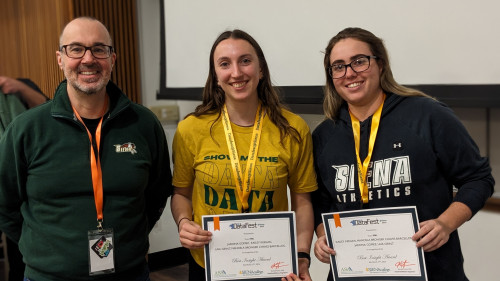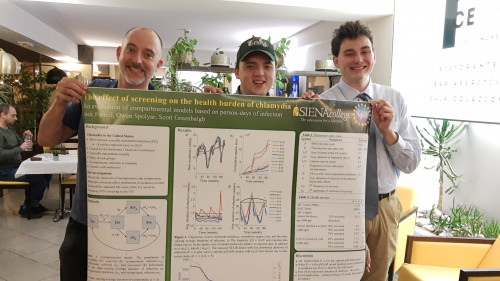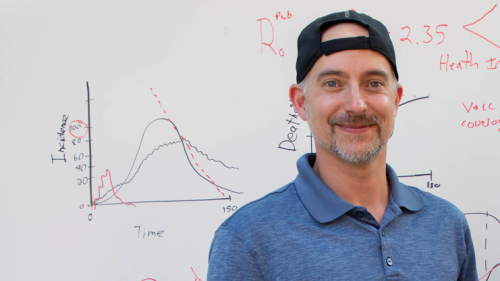
If (or when?) a zombie uprising threatens the annihilation of the human race, these are the zombie researchers that may help you survive the apocalypse.
In a tropical country like Brazil, deep in the jungle, there's a particularly frightening type of fungus. Ophiocordyceps unilateralis infects a carpenter ant, drains its host of all nutrients, then takes over its body. The fungus then leads the dead ant to a nearby plant stem where it uses the host body to produce more spores capable of infecting more ants, more zombie ants. It's not science fiction, it's just science. But could the tropical fungus ever produce human zombies? According to a pair of Siena students... yes.
Scott Greenhalgh, Ph.D., assistant professor of mathematics, secured a grant through The Mathematical Association of America to fund an eight-week zombie research program on campus this summer. His four zombie hunters (researchers), in collaboration with Kursad Tosun, Ph.D., assistant professor of mathematics, applied complex math to answer two questions: 1) Is a zombie apocalypse possible, and 2) What would be the most economical way to win a war with the undead?
Eli Reece '22 and Alisha Kumari '24 concluded that the zombie fungus, theoretically, could be transmitted to humans through fruits and vegetables. Next, they used values such as transmission rate and birth rate to determine the speed and possible magnitude of an uprising. Worried? Don't be. When it comes to zombies, the scenarios are still way more fiction than science. But, what if instead of zombies, the same math is applied to a new virus strain?
"We're basically talking about a new disease, just replace zombie with a virus. How fast would it spread? How do you calculate the percentage of the population that could become infected? That's how this research can be applied practically."
Eli Reece '22
Ahmani Roman '22 and Jacob Pacheco '21 researched the best way to arm civilization against an army of zombie attackers. They considered a passive approach to the crisis as their baseline, then ran simulations that included different weapons and quantities of ammo. They used a cost to benefit ratio to conclude that a single tap weapon would save the most human lives while effectively slowing the zombie march (which contradicts the double tap rule from the movie Zombieland). The ICER approach can also be used to summarize the cost-effectiveness of a health-care intervention... during a global pandemic, for example.
The students' zombie research made Capital Region news this week. News 10 ABC assured its viewers that, according to Siena students, in the event of a major zombie outbreak, the human race has the advantage.
"I had a great time doing this research. The skills that I learned are going to help me in future. I learned more about coding and writing a research paper. It helped me improve my organizational and time management skills."
Alisha Kumari '24
"This was my first year researching at Siena in person, and it was an overall a great experience. I grew in the areas of scientific writing, coding, and group work. The most important takeaway for me was the teamwork aspect. It helped prepare me for future collaboration in the workplace."
Ahmani Roman '22
VIDEO FEATURES

